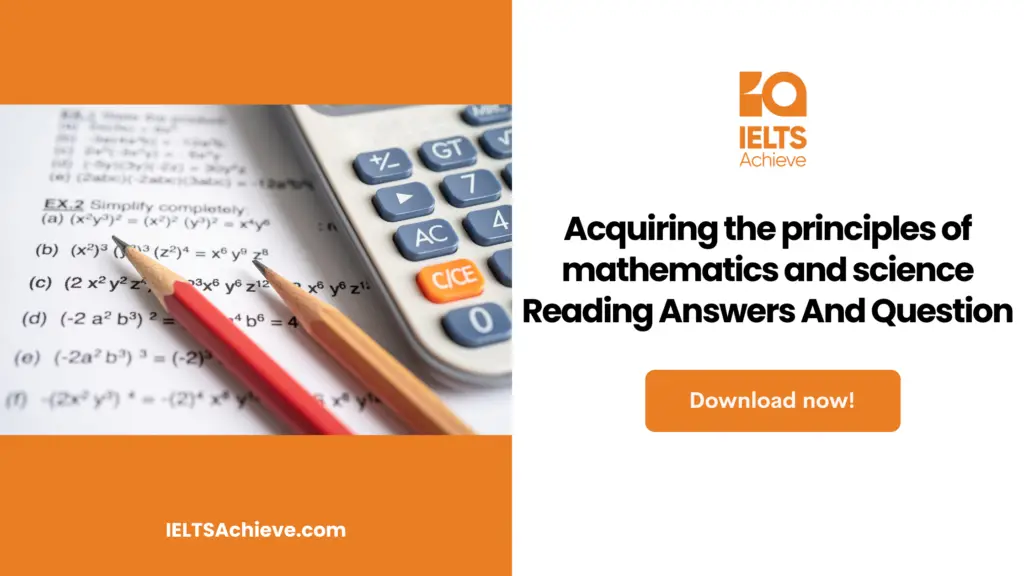The Blog post contains the following IELTS Reading Questions:
- IELTS Reading matching features
- IELTS Reading note completion
- IELTS Reading short answer questions
Stay informed and prepared for success – Explore our comprehensive Reading Test Info page to get valuable insights, exam format details, and expert tips for mastering the IELTS Reading section.
IELTS Reading Comprehension “Passage-Odonata”

Odonata
1. Odonata is the insect order that contains dragonflies and damselflies. Their brilliant colors and delicate-looking wings make them aesthetically pleasing to the human eye. In the wild, though, they are terrifying predators. Dragonflies and damselflies are named for their formidable, serrated jaws, which they employ to rip apart their prey. The word Odonata means “toothed jaw.”
2. Dragonflies and damselflies are frequently mistaken for one another due to their similarity. Close observation reveals the differences between them. The most noticeable distinction is how they hold their wings at rest. Damselflies fold their wings back, whereas dragonflies hold their wings out to the side. Due to their proximity, dragonfly eyes appear to encompass the entire face. There is a gap between the tiny eyes of damselflies. Dragonflies are bigger, stronger, and more capable fliers than damselflies. Consequently, they inhabit forests and areas away from water. Since they do not often fly far from the water, damselflies are typically observed along the margins of ponds and streams.
3. The biggest living odonata are the Hawaiian endemic dragonfly and the Central American damselfly, each of which has a 19-centimeter wing span. The smallest is the libellulidae dragonfly, which is endemic to East Asia and has a 20-millimeter wing span. It has been shown via the discovery of fossils that dragonflies have existed for over 300 million years. The biggest dragonfly fossil ever discovered belonged to the extinct meganeura monyi, which had a wingspan of 75 cm and lived 300 million years ago. This enormous predator fed on little amphibians in addition to other insects.
4. In a pond or stream, dragonflies and damselflies both deposit their eggs on or just beneath the surface of the water. Some species deposit their eggs on the stems of aquatic plants. The hatchlings emerge from the eggs as nymphs. They breathe through their gills and feed on aquatic insects, tadpoles, tiny fish, and even other nymphs. They hunt by lurking at the bottom of a pond or stream and waiting for their victim to swim along. When their prey comes close, they may extend a specialized lip to seize it. Depending on the species, they may exist in this state for months or even years. Several times, as the nymph matures, it sheds its skin. It exits the sea and loses its skin for the final time. The adult emerges, prepared to survive on land and in the air for the next several weeks or months. The adults do not survive more than four months, and many species barely live a few weeks as adults.
5. Dragonflies and damselflies are highly proficient hunters due to their remarkable vision and flying ability. Their specialized eyes provide them with a nearly 360-degree range of vision, allowing them to notice even the tiniest movement or flash of light created by other flying insects. They possess two sets of wings that are capable of moving independently of one another. This provides them with excellent aerial maneuverability, which is essential for these animals since they capture their prey while flying. They are able to hover, execute fast turns, and fly in reverse. Some species of dragonfly may fly at speeds exceeding 60 kilometers per hour. Their prey includes mosquitoes, deer flies, tiny dragonflies, butterflies, and moths. One species of dragonfly is known to remove spiders from their webs.
6. As bloodthirsty predators, dragonflies and damselflies are, in turn, prey for other creatures. Fish, frogs, toads, and other water species consume the nymphs. Adults are preyed upon by birds, frogs, as well as bigger dragonflies and damselflies. They might potentially become entangled in a spider’s web. What you give you will receive the same.
Unlock your full potential in the IELTS Reading section – Visit our IELTS Reading Practice Question Answer page now!
Recommended Questions:
Renewable Energy IELTS Reading Question with Answer
Questions 1-6
Which of the facts below are true of dragonflies, and which are true of damselflies. according to the information in the passage? On lines 1—6 on your answer sheet, write:
A if it is a fact about dragonflies only
B if it is a fact about damselflies only
C if it is a fact about both dragonflies and damselflies
1 They have saw-like jaws.
2 They hold their wings on their backs while resting.
3 Their eyes have a gap between them.
4 They can be seen in fields at a distance from ponds and streams.
5 The largest species has a wingspan of 19 centimeters.
6 The largest fossil has a wingspan of 75 centimeters.
Improve your performance in Matching Features questions by clicking here to access our comprehensive guide. Learn how to match specific features or characteristics with the options provided in the IELTS Reading section.
Questions 7-12
Complete the notes about the life cycle of odonata below. Choose your answers from the box below and write the correct letters, A—K, on lines 7—13 on your answer
The eggs are laid 7 ______. The young dragonflies and damselflies, called 8 _____, live underwater for a few 9 _______. They eat small water animals, catching their food 10 ______. When they are almost fully grown, they leave the water. The adults live for only a few 11______ . They are skillful 12 ________ and catch their prey in the air.
- in the air
- with their lips
- tadpoles
- fliers
- near the water’s surface
- nymphs
- at the bottom of a pond
- months or years
- weeks or months
- swimmers
- with their wings
Boost your performance in Summary, Notes, Table, and Flowchart Completion tasks. Click here to explore our detailed guide and learn how to effectively complete summaries, notes, tables, and flowcharts in the IELTS Reading section.
Question 13
Answer the following question.
Write NO MORE THAN TWO WORDS from the passage for each answer
What does the word “Odonata” mean?
Unlock your full potential in the IELTS Reading section – Visit our IELTS Reading Practice Question Answer page now!
Recommended Questions:
Renewable Energy IELTS Reading Question with Answer
Odonata IELTS Reading Answers
1 Answer: C
2 Answer: B
3 Answer: B
4 Answer: A
5 Answer: C
6 Answer: A
7 Answer: E
8 Answer: F
9 Answer: H
10 Answer: B
11 Answer: I
12 Answer : D
13 Answer: Toothed jaw

We hope you found this post useful in helping you to study for the IELTS Test. If you have any questions please let us know in the comments below or on the Facebook page.
The best way to keep up to date with posts like this is to like us on Facebook, then follow us on Instagram and Pinterest. If you need help preparing for the IELTS Test, join the IELTS Achieve Academy and see how we can assist you to achieve your desired band score. We offer an essay correction service, mock exams and online courses.


